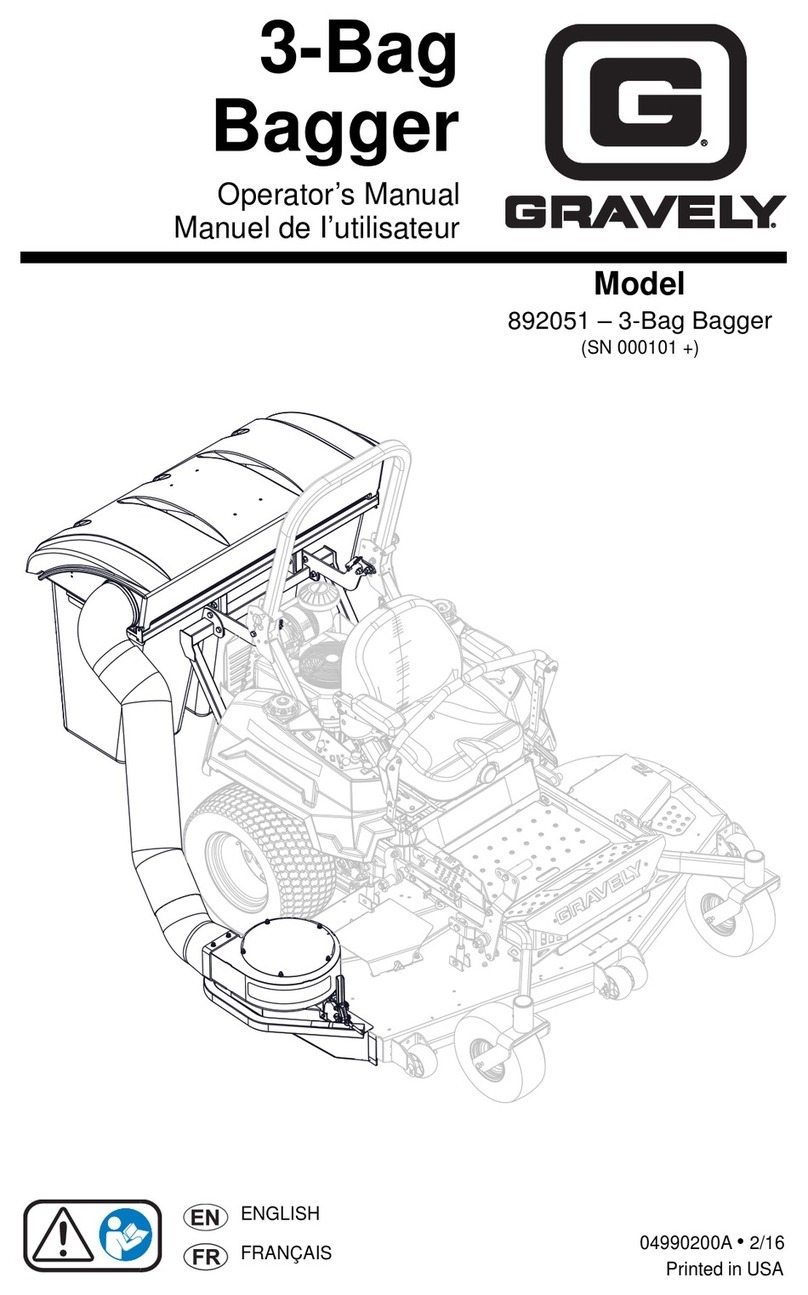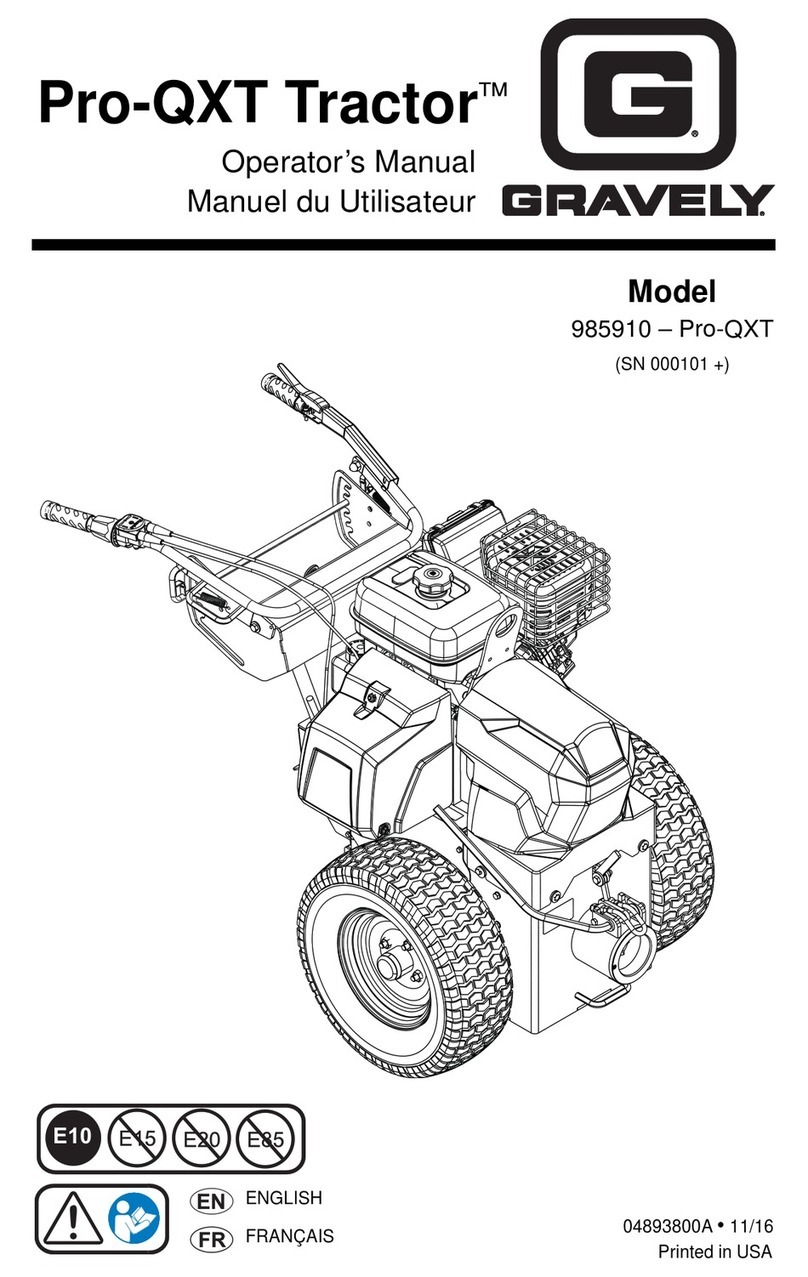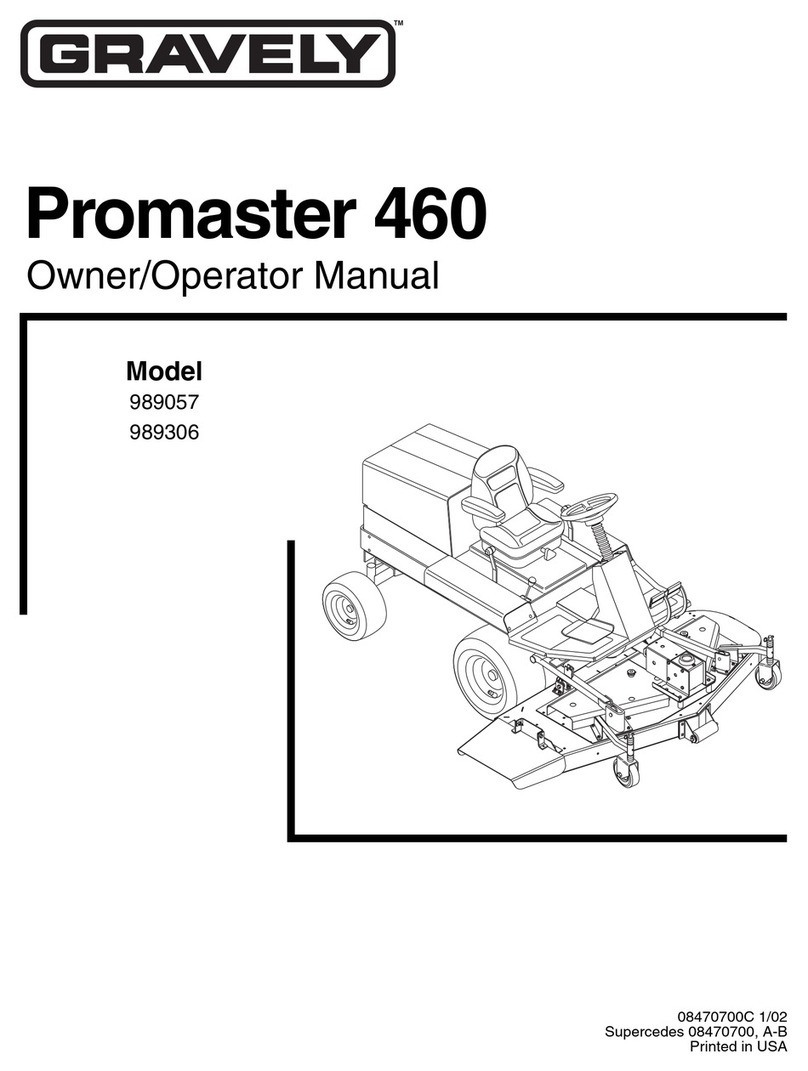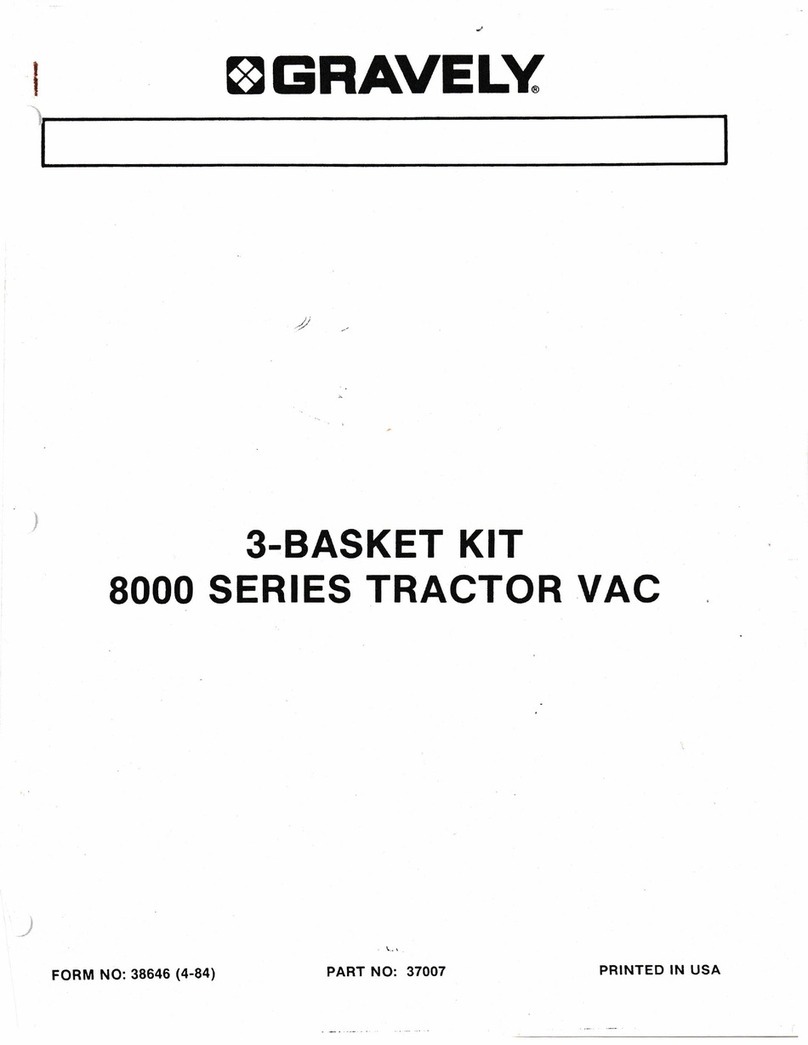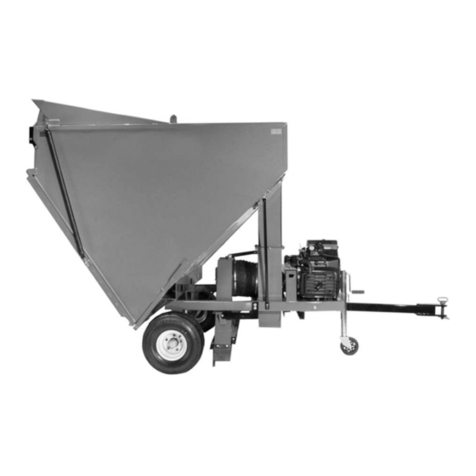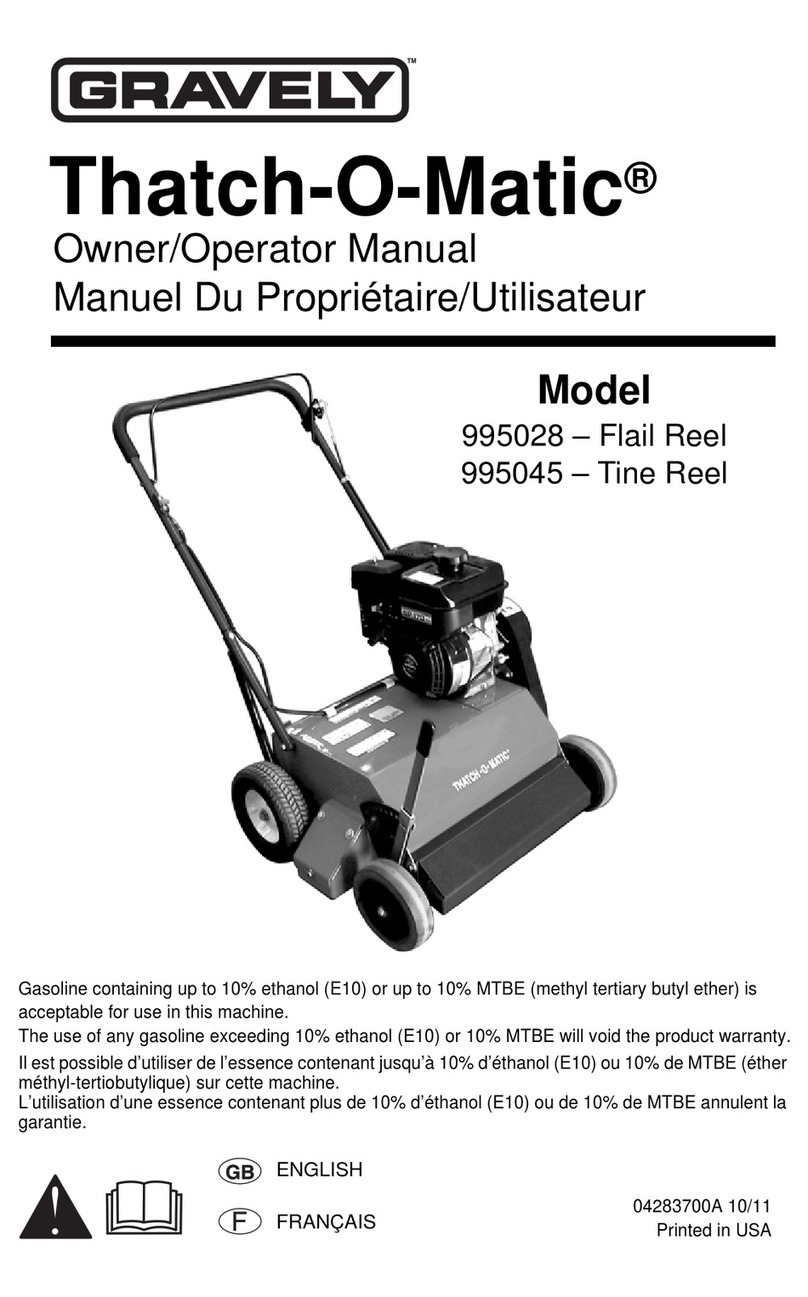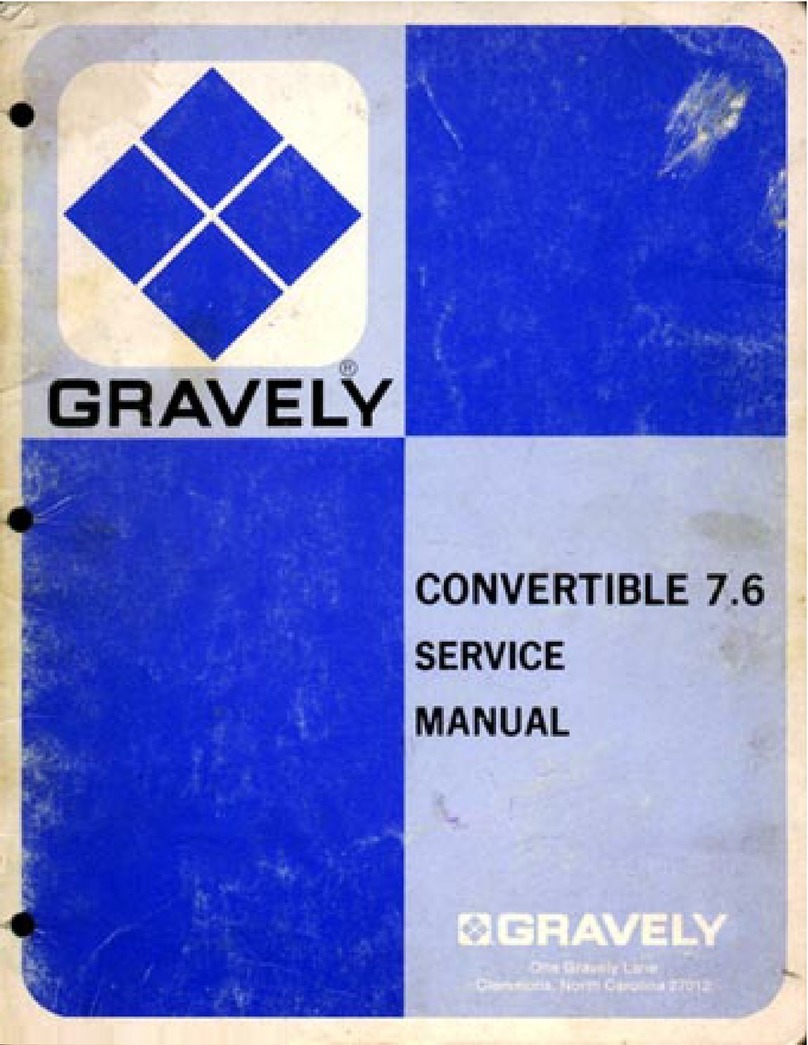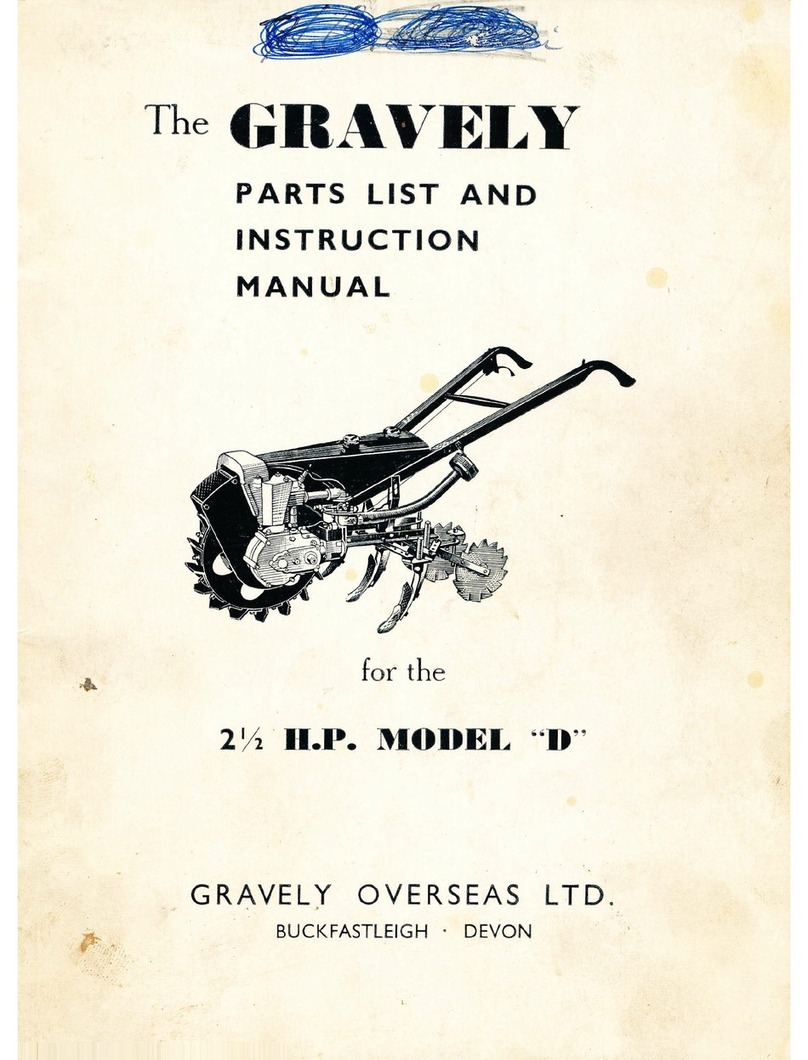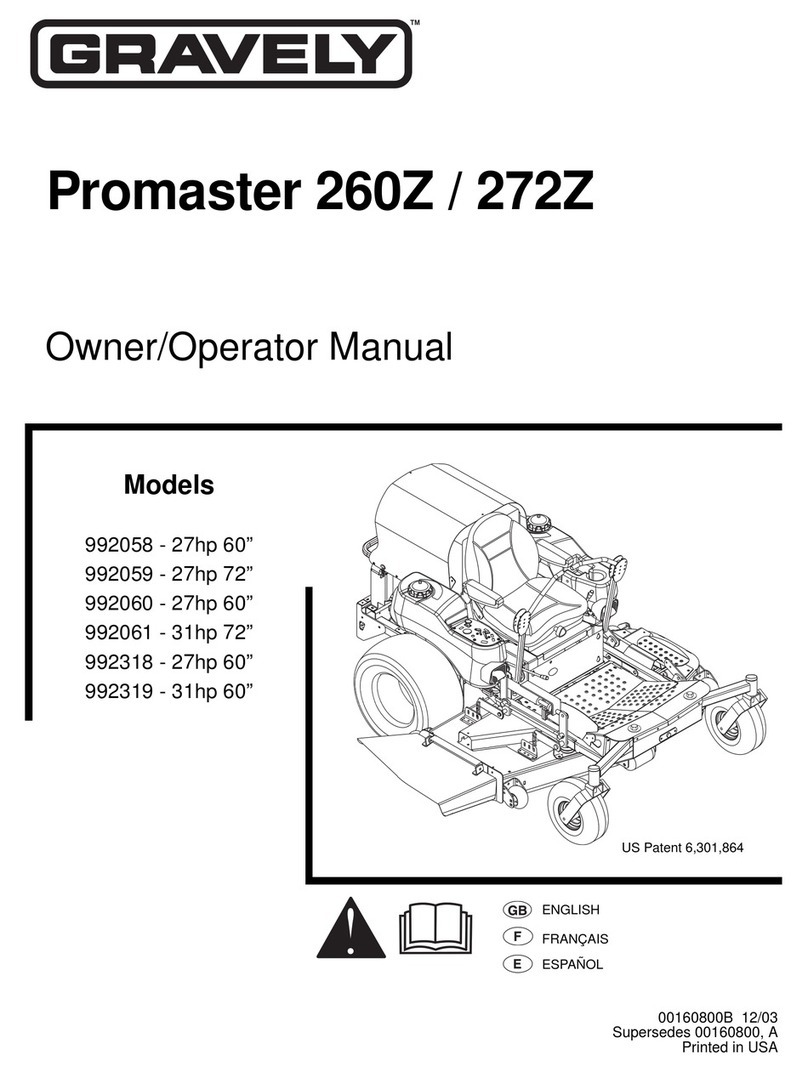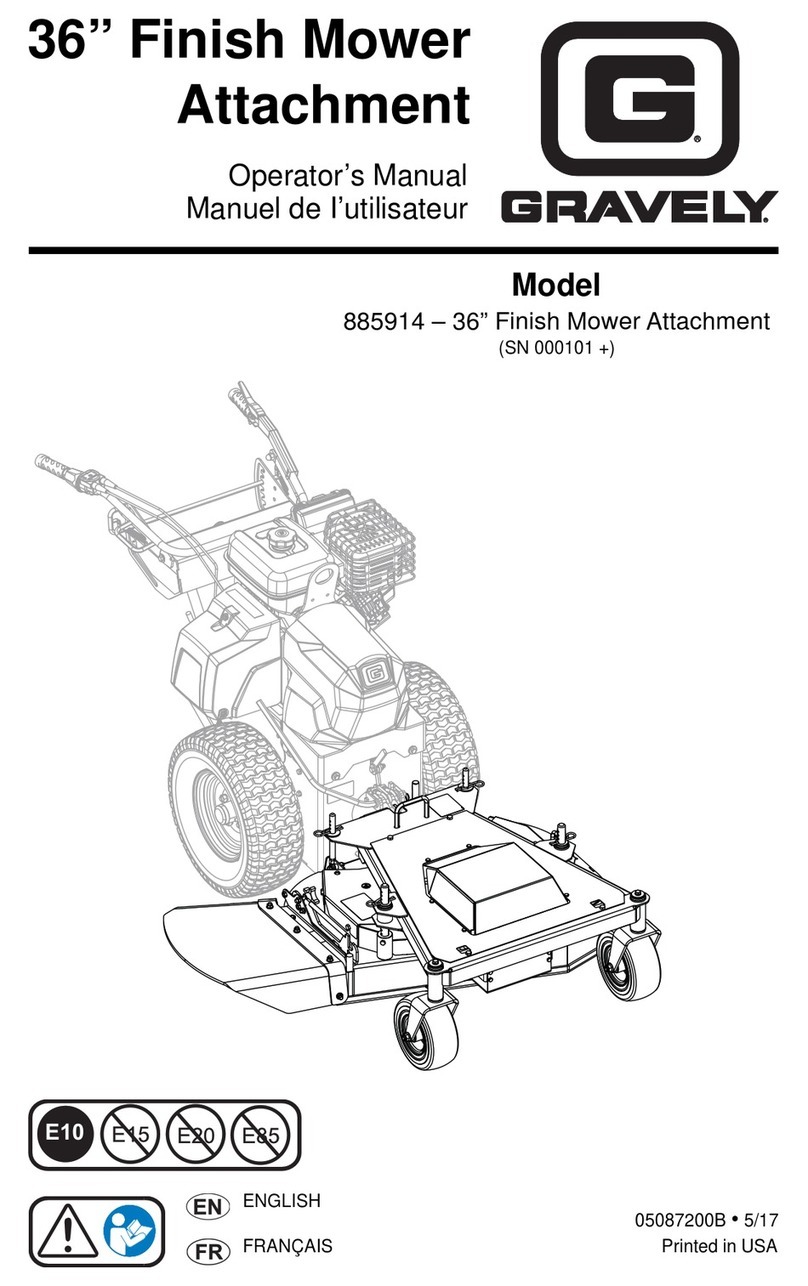
EN - 8
Operator Age
Do not allow children under the age of 18 to
operate any outdoor power equipment.
Local regulations may restrict the age of the
operator.
Data indicates operators age 60 years and
above are involved in a large percentage of
riding mower-related injuries.
These operators should evaluate their ability
to operate the riding mower safely enough to
protect themselves and others from serious
injury.
Children
Tragic accidents can occur if the operator is
not alert to the presence of children.
Children are often attracted to the machine
and the mowing activity. Never assume that
children will remain where you last saw
them.
Be alert and turn machine off if a child enters
the area.
Before and while backing, look behind and
down for small children.
Never carry children, even with the blade(s)
shut off. They may fall off and be seriously
injured or interfere with safe machine
operation. Children who have been given
rides in the past may suddenly appear in the
mowing area for another ride and be run
over or backed over by the machine.
Never allow children to operate the machine.
Use extreme care when approaching blind
corners, shrubs, trees, or other objects that
may block your view of a child.
Keep children out of the mowing area and in
the watchful care of a responsible adult
other than the operator.
Personal Protection
DO NOT wear loose clothing or jewelry and
tie back hair that may get caught in rotating
parts.
Wear adequate outer garments.
NEVER wear open sandals or canvas shoes
during operation. Wear adequate safety
gear, protective gloves and footwear.
Wear proper footwear to improve footing on
slippery surfaces
Always wear eye and ear protection when
operating machine.
Before Operating
Keep all nuts and bolts tight to be sure the
equipment is in safe working condition.
Maintain the machine to be in compliance
with the maintenance schedule.
Clean grass and debris from unit, especially
from around muffler and engine, to help
prevent fires.
Check parking brake operation frequently.
Adjust and service as required.
Inspect unit before each use for missing or
damaged decals and shields, correctly
operating safety interlock system, and
deterioration of grass catchers. Replace or
repair as needed.
Ensure Safety Interlock System is
functioning properly. DO NOT operate unit if
safety interlock is damaged or disabled.
Start and operate unit only when seated in
operator’s position. Steering control levers
must be in neutral, PTO disengaged and
parking brake set when starting engine.
Never tamper with safety devices. Check
their proper operation regularly.
Keep machine free of grass, leaves, or other
debris build-up. Clean up oil or fuel spillage
and remove any fuel-soaked debris.
Operation
Be sure the area is clear of bystanders
before operating. Stop machine if anyone
enters the area.
Never operate machine in a closed or poorly
ventilated area.
ALWAYS maintain unit in safe operating
condition. Damaged or worn out muffler can
cause fire or explosion.
This product is equipped with an internal
combustion type engine. DO NOT use unit
on or near any unimproved, forest-covered
or brush covered land unless exhaust
system is equipped with a spark arrester
meeting applicable local, state or federal
laws. A spark arrester, if it is used, must be
maintained in effective working order by
operator.
Do not operate machine while under the
influence of alcohol or drugs.
Do not put hands or feet near rotating parts
or under the machine. Keep clear of the
discharge opening at all times.
DO NOT touch parts which are hot. Allow
parts to cool.
